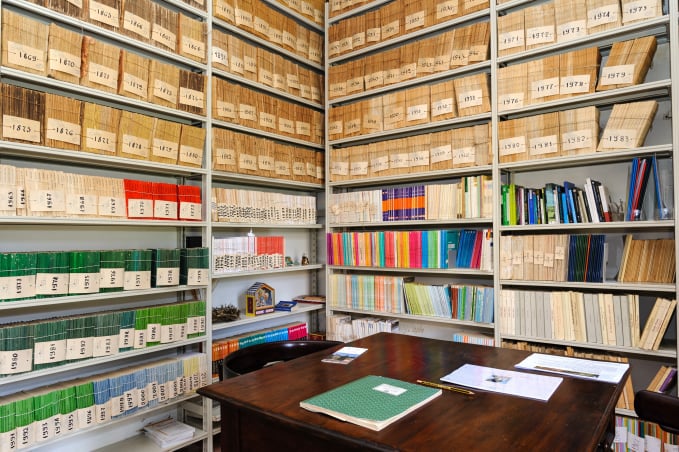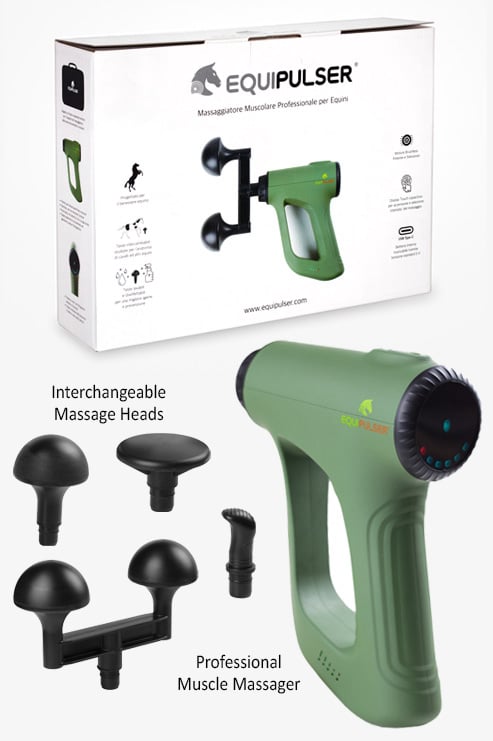Some scientific references for each of the benefits described:

1. Reduction of Tension and Pain
Gillis, C. L. (1999). Massage therapy and its role in the management of equine athletes. Journal of Equine Veterinary Science, 19(2), 84-87.
King, M. R., & Mansmann, R. A. (1997). Equine sports massage therapy: clinical applications and results. Equine Practice, 19(2), 11-14.
Haussler, K. K. (2009). Chapter 11: Myofascial release and massage therapy. In Veterinary Clinics of North America: Equine Practice, 25(1), 25-32.
2. Recovery from Injuries
King, M. R., & Mansmann, R. A. (1997). Equine sports massage therapy: clinical applications and results. Equine Practice, 19(2), 11-14.
Haussler, K. K., & Hill, A. E. (2010). Physical rehabilitation in equine practice. Veterinary Clinics of North America: Equine Practice, 26(3), 597-620.
Clayton, H. M. (1997). Conditioning sport horses. Journal of Equine Veterinary Science, 17(7), 343-347.
3. Improvement of Blood Circulation
Oke, S. L., & McIlwraith, C. W. (2010). Review of the economic impact of osteoarthritis and oral joint-health supplements in horses. Journal of Veterinary Pharmacology and Therapeutics, 33(4), 345-355.
Haussler, K. K. (2009). Chapter 11: Myofascial release and massage therapy. In Veterinary Clinics of North America: Equine Practice, 25(1), 25-32.
Smith, R. K. W., Zachary, J. F., & Archer, R. M. (2003). Principles of therapy of equine musculoskeletal disorders. Veterinary Clinics of North America: Equine Practice, 19(2), 177-194.
4. Decreased Muscle Fatigue
Hill, C., & Cros, D. (2014). The effects of massage on performance and recovery in horses. Journal of Equine Veterinary Science, 34(6), 678-683.
King, M. R., & Mansmann, R. A. (1997). Equine sports massage therapy: clinical applications and results. Equine Practice, 19(2), 11-14.
Gillis, C. L. (1999). Massage therapy and its role in the management of equine athletes. Journal of Equine Veterinary Science, 19(2), 84-87.
5. Behavior Improvement
McBride, S. D., & Mills, D. S. (2012). Psychological factors affecting equine performance. Equine Veterinary Journal, 44(5), 581-585.
Mohr, E., & Hyyppä, S. (2004). Massage effects on stress hormones in racing horses. Journal of Equine Veterinary Science, 24(3), 116-121.
Haussler, K. K., & Hill, A. E. (2010). Physical rehabilitation in equine practice. Veterinary Clinics of North America: Equine Practice, 26(3), 597-620.
6. Increased Flexibility
Haussler, K. K., & Hill, A. E. (2010). Physical rehabilitation in equine practice. Veterinary Clinics of North America: Equine Practice, 26(3), 597-620.
King, M. R., & Mansmann, R. A. (1997). Equine sports massage therapy: clinical applications and results. Equine Practice, 19(2), 11-14.
Haussler, K. K., & Hill, A. E. (2003). Physical therapy and rehabilitation. Veterinary Clinics of North America: Equine Practice, 26(3), 615-628.
7. Stress Reduction
Mohr, E., & Hyyppä, S. (2004). Massage effects on stress hormones in racing horses. Journal of Equine Veterinary Science, 24(3), 116-121.
Meyer, S. L., & Keil, L. M. (2005). Influence of massage therapy on pain and cortisol levels in horses. Journal of Equine Veterinary Science, 25(7), 331-337.
Haussler, K. K. (2009). Chapter 11: Myofascial release and massage therapy. In Veterinary Clinics of North America: Equine Practice, 25(1), 25-32.
8. Performance Improvement
Clayton, H. M. (1997). Conditioning sport horses. Journal of Equine Veterinary Science, 17(7), 343-347.
Gillis, C. L. (1999). Massage therapy and its role in the management of equine athletes. Journal of Equine Veterinary Science, 19(2), 84-87.
Hill, C., & Cros, D. (2014). The effects of massage on performance and recovery in horses. Journal of Equine Veterinary Science, 34(6), 678-683.
9. Reduction of Stress Hormones
Mohr, E., & Hyyppä, S. (2004). Massage effects on stress hormones in racing horses. Journal of Equine Veterinary Science, 24(3), 116-121.
Meyer, S. L., & Keil, L. M. (2005). Influence of massage therapy on pain and cortisol levels in horses. Journal of Equine Veterinary Science, 25(7), 331-337.
McBride, S. D., & Mills, D. S. (2012). Psychological factors affecting equine performance. Equine Veterinary Journal, 44(5), 581-585.
10. Promotion of General Well-being
Haussler, K. K., & King, M. R. (2003). Massage therapy in equine practice. Equine Veterinary Education, 15(3), 130-135.
Haussler, K. K., & Hill, A. E. (2010). Physical rehabilitation in equine practice. Veterinary Clinics of North America: Equine Practice, 26(3), 597-620.
Clayton, H. M. (1997). Conditioning sport horses. Journal of Equine Veterinary Science, 17(7), 343-347.
